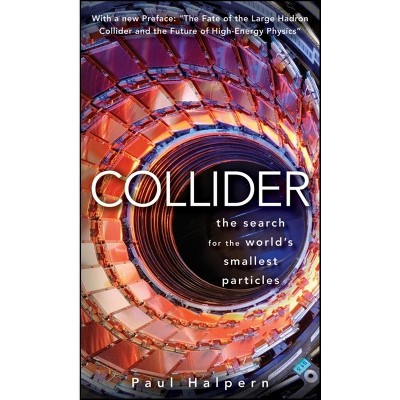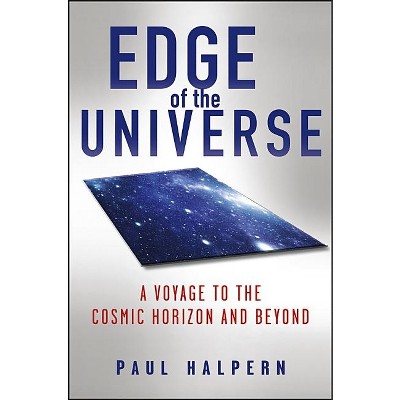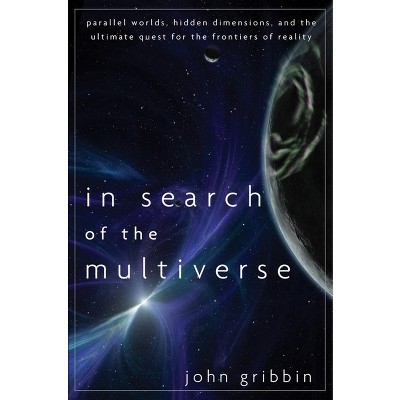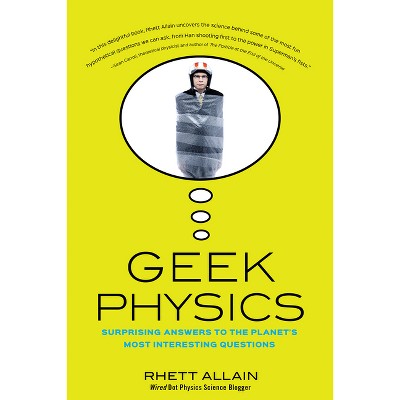Sponsored

The Great Beyond - by Paul Halpern (Paperback)
In Stock
Sponsored
About this item
Highlights
- The concept of multiple unperceived dimensions in the universe is one of the hottest topics in contemporary physics.
- About the Author: PAUL HALPERN, Ph.D., is professor of physics and mathematics at the University of the Sciences in Philadelphia.
- 320 Pages
- Science, Physics
Description
Book Synopsis
The concept of multiple unperceived dimensions in the universe is one of the hottest topics in contemporary physics. It is essential to current attempts to explain gravity and the underlying structure of the universe. The Great Beyond begins with Einstein's famous quarrel with Heisenberg and Bohr, whose theories of uncertainty threatened the order Einstein believed was essential to the universe, and it was his rejection of uncertainty that drove him to ponder the existence of a fifth dimension. Beginning with this famous disagreement and culminating with an explanation of the newest "brane" approach, author Paul Halpern shows how current debates about the nature of reality began as age-old controversies, and addresses how the possibility of higher dimensions has influenced culture over the past one hundred years.From the Back Cover
Praise for The Great Beyond"A marvelous book--very clear, very readable. A brilliant introduction to the math and physics of higher dimensions, from Flatland to superstrings. Its greatest strength is a wealth of fascinating historical narrative and anecdote. I enjoyed it enormously."
--Ian Stewart, author of Flatterland
"A remarkable journey from Plato's cave to the farthest reaches of human thought and scientific knowledge. This mind-boggling book allows readers to dream strange visions of hyperspace, chase light waves, explore Klein's quantum odyssey and Kaluza's cocoon, leap through parallel universes, and grasp the very essence of conscience and cosmos. Buy this book and feed your head."
--Clifford Pickover, author of A Passion for Mathematics
"Halpern looks with a bemused eye at the wildest ideas currently afoot in physics. He takes us into the personal world of those who relish and explore seemingly outlandish notions, and does it with a light, engaging style."
--Gregory Benford, author of Foundation's Fear
"An informative, stimulating, and thoughtful presentation at the very frontiers of contemporary physics. It is quite on a par with Brian Greene's The Elegant Universe or his more recent The Fabric of the Cosmos, and as such, deserves to receive wide non-specialist coverage among an intelligent, curious, thinking public."
--Professor E. Sheldon, Contemporary Physics
Review Quotes
" ... remarkably accessible... ." ("Sky & Telescope, February 2005)
" Halpern dug out some historical details that other writers miss and this helps make the string picture more complete" ("Focus, December 2004)
Many physicists are continuing to work toward the fabled goal of a " theory of everything." A successful theory would unify the four known physical forces - gravity, electromagnetism, and the nuclear strong and weak forces - and case some light upon newly discovered cosmological phenomena and puzzles. Quite a few theoreticians are attempting to use postulated extra dimensions to come up with a workable product; fantastic as it may seem, a universe containing ten or 11 dimensions offers considerable promise. Halpern (physics & mathematics, Univ. of the Sciences, Philadelphia) takes a historical approach to examining the advancement of multidimensional theory. Kaluza, Klein, Einstein, and many other contributors over the past 100 years are discussed, and their work is described at a level appropriate for a general audience. Only Halpern's terminology and the pace of the discussion in the last few chapters will challenge nonspecialists. Recommended for academic and large public libraries. - Jack W. Weigel, Ann Arbor, MI ("Library Journal, July 2004)
Ever since Plato first told his students the allegory of the cave, people have wondered whether dimensions exist beyond the three we immediately perceive. An extra dimension-- time-- played a role in Einstein's work, although he saw it only as a necessary evil to get his equations to work. Other scientists were morereceptive: mathematical physicists Oskar Klein and Theodor Kaluza made higher dimensions an integral part of their attempts to discover a " theory of everything" that would tie together strong and weak nuclear forces, electromagnetism and gravity. Halpern explains that over the past century gravity has been the shadow flickering on the walls of the cave hinting at other realms. Why is it so weak compared with electromagnetism? With string theory, and its successor, M-theory, physicists speculate that gravity " leaks" back and forth between our reality, an 11-dimensional " brane" (or membrane) and other branes, perhaps as close as a millimeter away. Halpern masterfully creates word pictures to illustrate mind-bending scientific theories, and he paints highly detailed sketches of the scientists involved-- sometimes too detailed, leading readers to lose the thread of the narrative. Science buffs won't find much new here, but for average readers, this is an accessible account of the search for what lies behind our dim perception of reality. B& w photos. "Agent, Giles Anderson. (July 16) ("Publishers Weekly, June 7, 2004)
" ... remarkably accessible... ." ("Sky & Telescope, February 2005)
" Halpern dug out some historical details that other writers miss and this helps make the string picture more complete" ("Focus, December 2004)
About the Author
PAUL HALPERN, Ph.D., is professor of physics and mathematics at the University of the Sciences in Philadelphia. He received a John Simon Guggenheim Memorial Fellowship Award for the research that ultimately resulted in The Great Beyond. Halpern's previous books include Time Journeys, Cosmic Wormholes, and The Cyclical Serpent.




